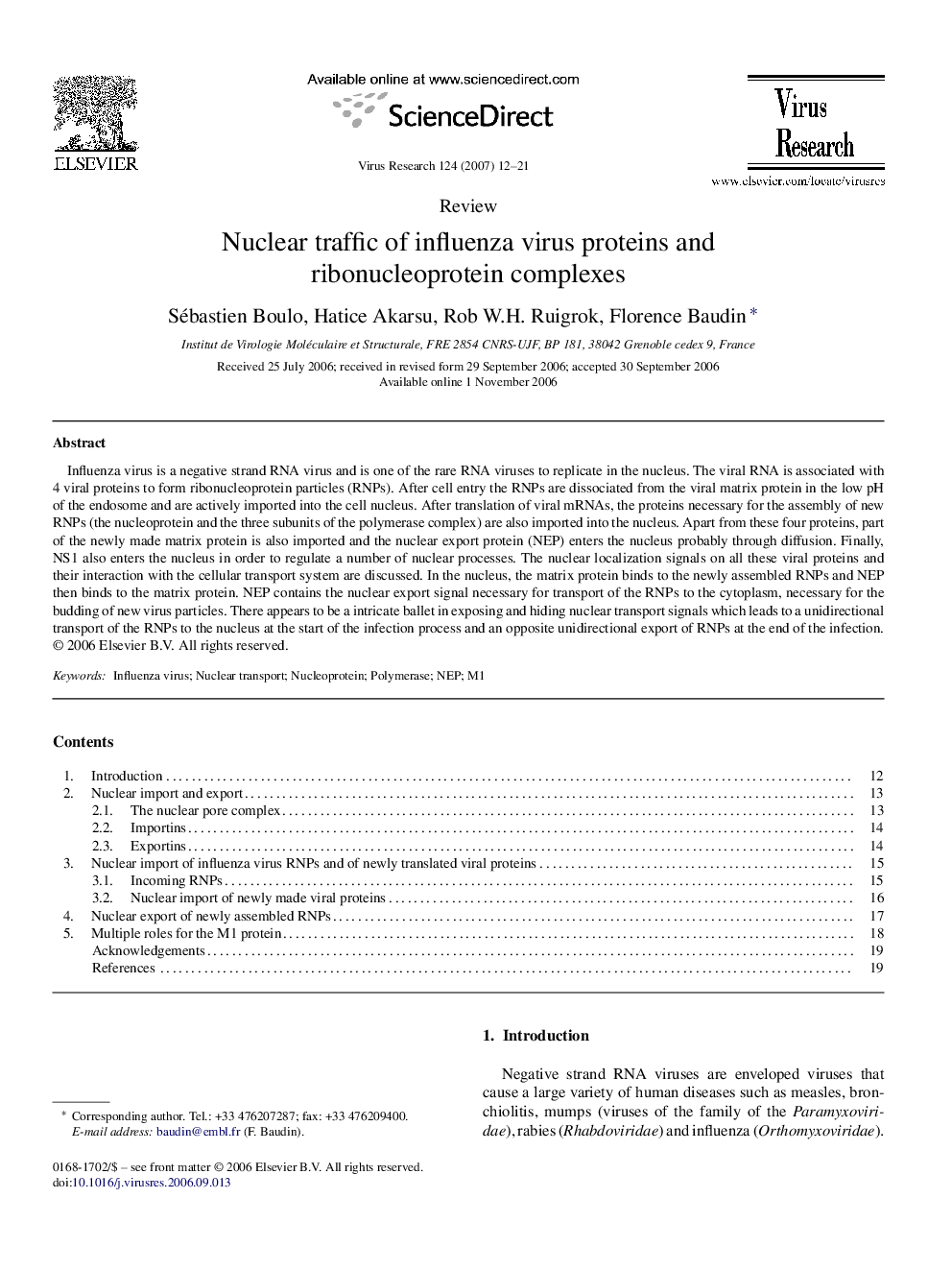| Article ID | Journal | Published Year | Pages | File Type |
|---|---|---|---|---|
| 3430969 | Virus Research | 2007 | 10 Pages |
Influenza virus is a negative strand RNA virus and is one of the rare RNA viruses to replicate in the nucleus. The viral RNA is associated with 4 viral proteins to form ribonucleoprotein particles (RNPs). After cell entry the RNPs are dissociated from the viral matrix protein in the low pH of the endosome and are actively imported into the cell nucleus. After translation of viral mRNAs, the proteins necessary for the assembly of new RNPs (the nucleoprotein and the three subunits of the polymerase complex) are also imported into the nucleus. Apart from these four proteins, part of the newly made matrix protein is also imported and the nuclear export protein (NEP) enters the nucleus probably through diffusion. Finally, NS1 also enters the nucleus in order to regulate a number of nuclear processes. The nuclear localization signals on all these viral proteins and their interaction with the cellular transport system are discussed. In the nucleus, the matrix protein binds to the newly assembled RNPs and NEP then binds to the matrix protein. NEP contains the nuclear export signal necessary for transport of the RNPs to the cytoplasm, necessary for the budding of new virus particles. There appears to be a intricate ballet in exposing and hiding nuclear transport signals which leads to a unidirectional transport of the RNPs to the nucleus at the start of the infection process and an opposite unidirectional export of RNPs at the end of the infection.
